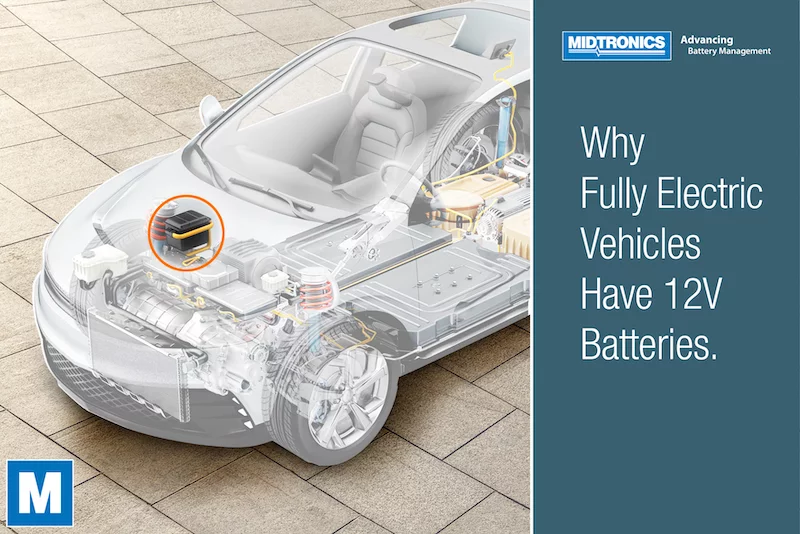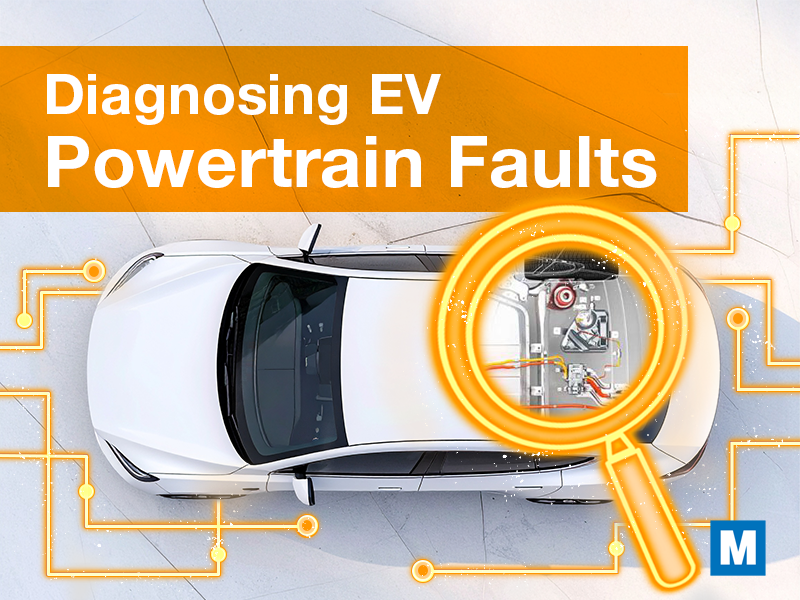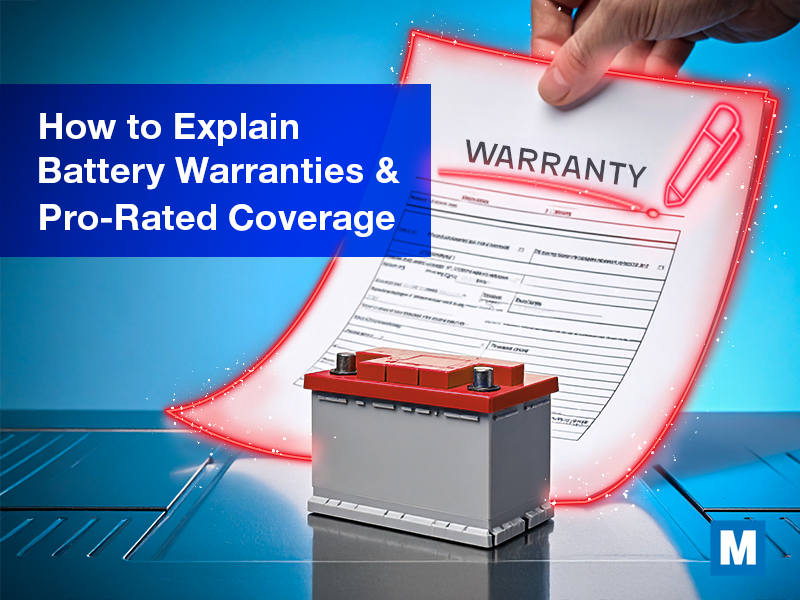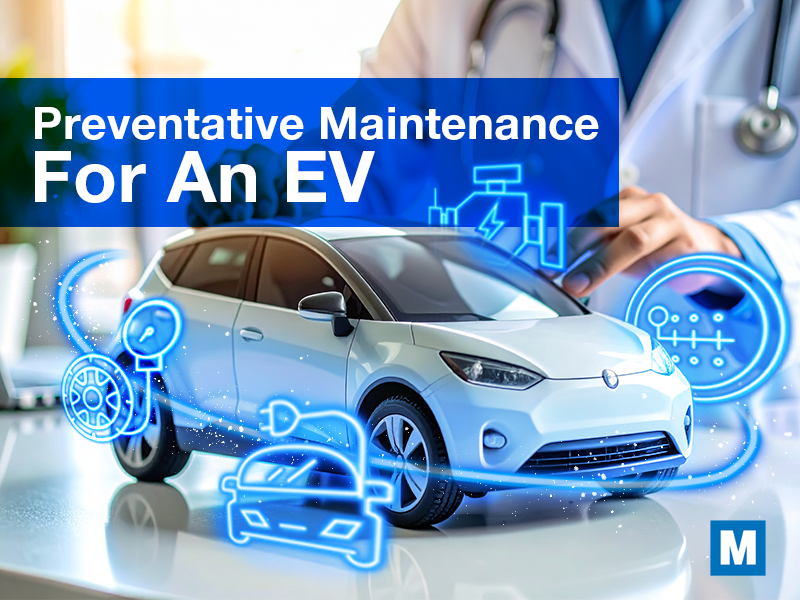Here’s what you should know about the 12-volt system in an EV.
What does the 12-volt battery do in an EV?
Behind the shiny exterior on an electric car, there hide two very different electrical systems. The main system for propulsion is high voltage, commonly at 400 volts but with many suppliers beginning to use an 800V system. This is what powers the high-torque electric motors at the vehicle’s wheels. The other is a 12-volt system, just like the electrical systems that have been used in regular ICE vehicles for the past seven decades and beyond.
It helps to think about the two voltages in different terms. On one hand, the 12-volt system is like a garden hose that can deliver a few gallons per minute, and on the other hand is the 400V electrical system that is like a waterfall, sending thousands of gallons over the edge every minute.
That’s important because most of an EV’s electrical devices – the infotainment system, power door locks, power windows, HVAC fan, and safety systems including airbags and ADAS technology – use 12 volts or less. If an electric car were to use the high-voltage system for the accessories and non-propulsion systems, it would create a serious safety issue. Working on any circuit inside the car would require specialized equipment. And in the event of a collision, the danger would be astronomical if the high voltage shorted to a circuit that the driver came into contact with.
What happens if the battery dies?
If an electric vehicle’s 12-volt battery dies, what happens? Just like in a gas-powered vehicle, the power supply to many critical systems is compromised. If you don’t have control over functions inside the car like the ignition button or switch, you can’t initiate your propulsion system, even if the high-voltage battery pack contains a full charge. That’s because the inverter that converts the battery’s DC power to AC power that the motors need is powered by the 12-volt system. What’s more, it wouldn’t be safe to drive, even if you could get going.
But you aren’t exactly dead in the water. It’s a typical 12-volt system, which means you’re able to jump-start the system either with a booster pack or with jumper cables connected to another vehicle.
How is it charged?
Since there isn’t a mechanically rotating pulley system under the hood like a traditional ICE vehicle, an alternator doesn’t work to recharge the 12-volt battery. Rather, electric cars use a converter that draws current from the large battery pack, topping it up. In some cars, a small solar panel can also be used to add a trickle charge to the 12-volt battery. Also, when an EV is plugged into a wall socket or fast charger, the 12-volt battery is usually charging at the same time.
Can’t the high-voltage battery be used instead?
It would be extremely expensive to convert all the tech inside a car from the widely used 12V systems to parts that convert from a higher voltage. It’s also impractical since there’s a simpler solution already in use. Not to mention, the 12-volt lead-acid battery powers a critical safety component – the contactor – that disconnects the high-powered battery in the event of a collision.
While it’s technically possible to work around it, there’s no pressing need to replace the current design.
Common battery types and chemistries for 12V batteries in EVs
A 12-volt battery ‘under the hood’ of an electric car is very much like the type you’d find in an ICE vehicle. Most of the ones you’ll find are lead-acid chemistry as well, even if they’re a different amperage capacity.
- AGM, or absorbed glass mat, batteries are a top choice for most automakers and battery manufacturers building cells for electric cars. They’re maintenance-free and are ideal for vehicles with advanced electronic systems, which EVs are certainly considered. They recharge quickly and last roughly twice as long as standard flooded lead-acid batteries.
- EFB, or enhanced flooded batteries, are another option that carmakers are using. Their internal improvements include adding carbon to the plate manufacturing process for better cyclic stability and charge acceptance when they’re low on charge. They’re a middle ground between a standard lead-acid battery and an AGM battery.
- Deep cycle batteries are used by some EV manufacturers. They’re designed with thicker plates internally to aid in energy absorption into the plate. They’re more resistant to degradation from rapid charging or deep discharges.
Along with lead-acid battery designs, the industry is starting to see manufacturers introduce lithium-ion 12-volt batteries into electric cars. There are phenomenal benefits in li-ion technology including an immense weight reduction over lead-acid battery designs as well as higher capacity in the same physical size. They tend to last a few years longer than their lead-acid counterparts.
Maintaining an EV 12-volt battery
Like any car battery, maintaining the 12V battery in an EV is crucial for getting the most out of it. If your battery has fully discharged for some reason – maybe the car sat unused for a few weeks – it can reduce the state of health on the battery. Jump-starting these batteries is possible, but if you’ve needed to boost it, a full recharge or recondition is a good idea. And of course, determining the reason for the problem and addressing it is necessary.
Whether it’s an EV’s 12-volt battery or high-voltage battery that needs maintenance or servicing, Midtronics has the EV solutions and equipment to deal with it effectively.




